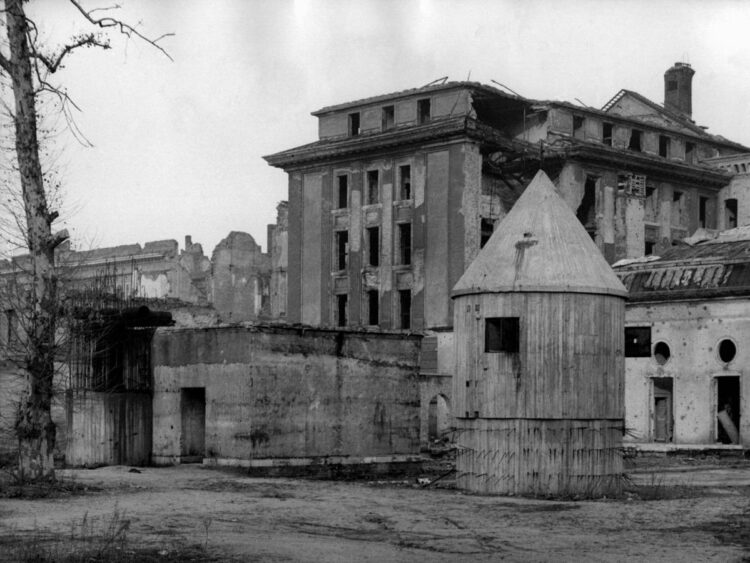
-
Johanna Ruf was a nurse in the Berlin bunker where Nazi dictator Adolf Hitler spent his final days.
-
In 2017, she published her memoir on her time in the bunker as the Red Army advanced in 1945.
-
Ruf died at 94, the Berliner Zeitung reported, citing confirmation from her publisher.
A woman thought to be the last survivor of Hitler’s Berlin bunker, known as the Führerbunker, in Berlin has died at the age of 94, according to Berliner Zeitung.
Johanna Ruf was 15 years old in April 1945 and was a member of the Bund Deutscher Mädel, the female wing of the Hitler Youth. Ruf volunteered to work as a nurse during the final months of World War II after her school lessons stopped in January, The Times reported.
She said she initially worked at a bunker in the Anhalter station but then took up a position under the Reich Chancellery, in an area next to Hitler’s bunker, per the report.
Ruf noted down her thoughts and experiences of life in the “citadel defense area,” as the area around the Chancellery was known, and she eventually decided to publish a set of memoirs titled “A Slap For Little Goebbels” in 2017.
“I wrote something down on pieces of paper every day, then later wrote it into a notebook and then typed it up,” she said, per The Times. “For a long time, I was embarrassed because I gave Helmut, the little Goebbels, a big slap in the face. He was so cheeky! Over-excited.
“I threatened to slap him. He said, ‘Go on then!’ So I gave him one. A few hours later, Helmut and his five siblings were dead, poisoned by his mother Magda in the bunker.”
The Berliner Zeitung reported that Ruf was also one of the last people to see Goebbels’ children before they were murdered by their parents in the bunker.
Ruf said that although she did not meet Adolf Hitler, she did see his infamous minister of propaganda, Joseph Goebbels, when he visited the hospital to give staff a pep talk as the Soviet Red Army closed in, she told Bild.
“He said, ‘final victory is at the door,’ but there were only Russians at the door,” she said.
Wieland Giebel, who edited Ruf’s book, said that he hoped it provided an insight into what really happened at the time, per Berliner Zeitung. He said he saw it as a “document about how young people grow up in a dictatorship and get involved.”
He added that it was important evidence to discredit the conspiracy that Hitler had survived, as Ruf recounts a doctor informing her that Hitler had killed himself and that soldiers had burned his body.

The Führerbunker in central Berlin was completed between 1936 and 1944, with Hitler moving in full-time on January 16, 1945. He would go on to spend his final 105 days living in the bunker as Stalin’s Red Army tightened its noose on the capital of the Third Reich, according to the History Channel.
The two-level bunker lay below the Reich Chancellery, Hitler’s headquarters, and it contained living quarters for the Führer and his wife, Eva Braun, as well as for Goebbels and his family. There was also an office, a doctor’s room, and a large conference room, among other areas.
Hitler married Braun on April 29 in the bunker, one day before he shot himself.
Read the original article on Business Insider
[ad_2]
Source link







